One of the biggest and most impressive museums in the world is located in the City of London, and in this post, we’ll take a closer look at some of the most interesting British Museum facts.
This article will help you understand how an initial collection of 70,000 items has been able to house over 8,000,000 works today, including paintings, prints and drawings, and ancient artifacts (even though only a fraction of these are on public display as you’ll soon discover)!
1. It all started with the collection of a single man
The history of the British Museum can be traced back to a single document, namely the will of Irish physician and naturalist Sir Hans Sloane (1660-1753). He owned a collection of over 71,000 items which he amassed during his time in London.
He was able to do so after marrying the rich widow of a slave owner. His collection included over 40,000 printed books, 7,000 manuscripts, a wide variety of items related to the history of nature, as well as a collection of antiquities of ancient Rome, Greece, Asia, and Africa.
Because of his hunger to explore and gather items, he was once referred to as “the foremost toyman of his time.” His will stipulated that his entire collection could be acquired by the British nation (and therefore King George II) for a sum of £20,000 which was to be paid to his two daughters.

2. The museum was established in the year 1753
King George II wasn’t too eager to pay this huge amount of money to acquire the collection, but Sloane was clever enough to add something to his will which would make it impossible to refuse the offer.
Should the King refuse, the collection was to be offered to European institutions with the same terms. Parliament stepped in and on June 7, 1753, an Act of Parliament was approved which established the British Museum.
Two additional collections were included, namely the “Cottonian Library” and the “Harleian Library,” and a dubious lottery was organized to raise the funds. The British Museum was a unique new museum that was freely open to the public and had the sole aim of collecting as much as possible.

3. Buckingham Palace nearly became the museum’s first location
The trustees overseeing the British Museum Act 1753 had one more important decision to make, and that was to decide where the collection of the museum was to be housed.

One of the most remarkable British Museum facts is that one of the buildings that were considered was “Buckingham House,” now referred to as “Buckingham Palace,” today the official London residence of the British Monarch.
The trustees rejected Buckingham House and inside decided to acquire Montagu House in the Bloomsbury district of London. The first house in this location was destroyed by fire in 1686 and rebuilt shortly after. It was eventually bought from the Montagu Family from the newly established British Museum in 1759 for a fee of £20,000.
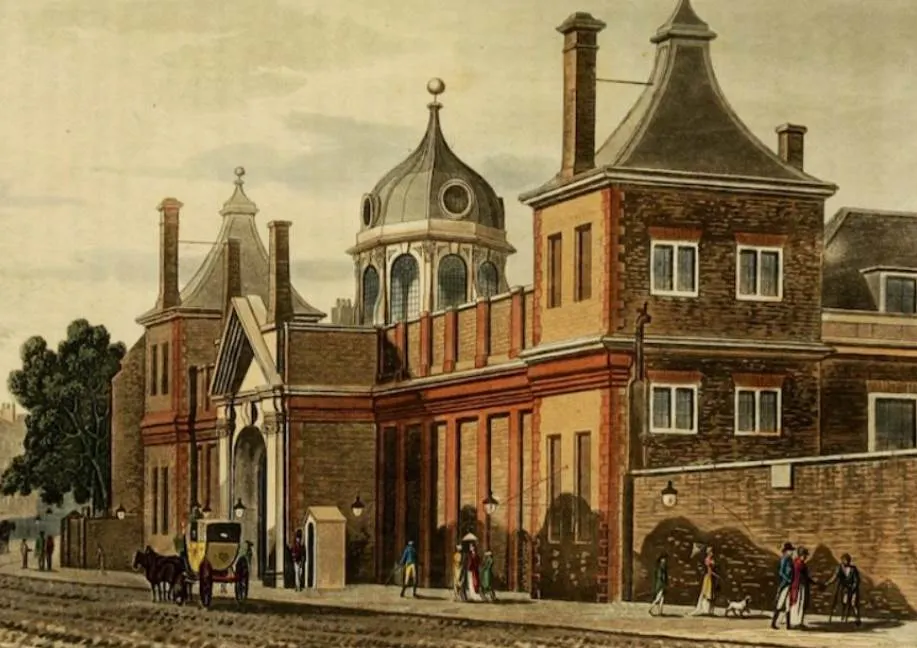
4. A renowned Neoclassical architect designed the new building
The British Museum along with its reading room for scholars officially opened to the public on January 15, 1759. The entire museum was classified by Carl Linnaeus (1707-1778) according to the Linnaean system he developed in the 18th century.
The collection further that century and one of the most notable additions in the 18th century was a collection brought back to Britain from the South Seas by Captain James Cook.
When the King’s Library, collected by King George III, became part of the collection in 1823, the Montagu House didn’t suffice anymore and plans were made to build a new structure to house the collection.
Renowned architect Sir Robert Smirke (1780-1867) was hired to design the new Neoclassical building. It features a Greek Revival Façade that features 44 columns of the Ionic order, each standing 14 meters (45 feet) tall.

5. The King’s Library was the first building to be completed in 1823
The first wing to be completed was the King’s Library between 1823 and 1828. The structure is the East Wing of the complex and is now referred to as the Enlightenment Gallery.
This was followed by the North Wing which originally housed a reading room but has now been transformed into the “Wellcome Gallery.” Both original wings were built around a central courtyard and completed in the year 1838.
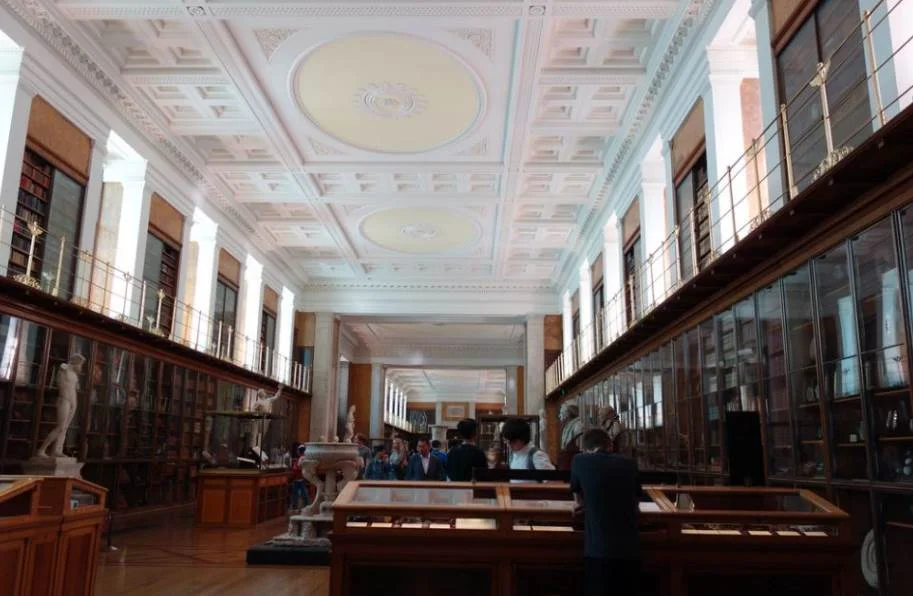
6. The original museum was demolished in the year 1842
With the first two wings of the new building completed, the entire collection was moved into them and the Montagu House could be demolished to make way for the two final wings.
As the northern part of the West Wing was being constructed, the Montagu House was demolished, something that was done in 1842. The West Wing was finally completed in 1846 and the South Wing, featuring its magnificent row of columns, was completed between 1843 and 1847.
This also marked the year that the Front Hall and Great Staircase were completed. This magnificent entrance was clad with Portland stone, quarried on the Isle of Portland, Dorset, England.

7. The Reading Room was designed by the original architect’s brother
One of the most fascinating British Museum facts is that Sir Robert Smirke’s brother ended up replacing him as the architect of the museum in 1846.
Sydney Smirke was hired and his contribution to the structure was the Round Reading Room, an immense space in the center of the complex that features a fascinating dome.
This structure was completed between 1854 and 1857 and upon completion, it featured the second-biggest dome in the world with a total diameter of 43 meters (140). Only the dome of the Pantheon in Rome was slightly bigger at the time.
This room was continuously used until 2007 when it was transformed into an exhibition center between 2007 and 2017. Today, it’s uncertain what this magnificent space will be used for as a decision has yet to be made.

8. An early 20th-century expansion was supposed to be much bigger
The final major addition in the 19th century was the White Wing which was completed between 1882 and 1884. Following this addition, the space to expand was getting tight because of 69 houses that were pretty much adjoining the museum by then.
In 1895, Parliament gave the museum approval to get a loan of £200,000 to acquire these 69 houses and to demolish them. This would have allowed the museum to expand on the west, north, and east sides.
Some houses were eventually demolished and the Edward VII Galleries on the northern side were built between 1906 and 1914, but most of the 69 houses still stand today and the grandiose expansion plan was never completed.
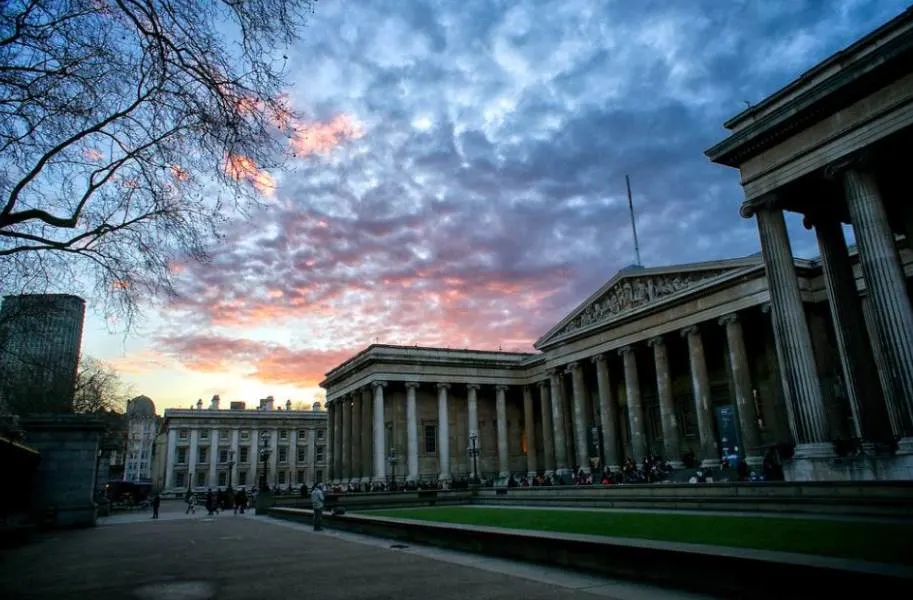
9. The museum features a remarkable square at its center
Some of the galleries were hit by bombs during World War II and the Duveen Gallery even had to be completely rebuilt because of it.
This gallery along with the other sections of destroyed wings wasn’t reopened until the 1960s and no further expansions were completed over the 20th century.
The next major addition wasn’t completed until the year 2000, and what an addition it is! The Queen Elizabeth II Great Court was designed by architects Foster and Partners (which also designed the new Wembley Stadium in London) and is the largest covered square in Europe.
The court is covered with 1,656 uniquely shaped panes of glass and features the Reading Room at its center, an amazing space in the heart of the museum.

10. An enormous exhibition center was opened in 2014
Another incredible addition to the museum was completed in 2014 when the “World Conservation and Exhibition Center” was opened after being announced back in 2007.
This building allows the museum to centralize all its conservation facilities and cost a whopping £135 million to construct!
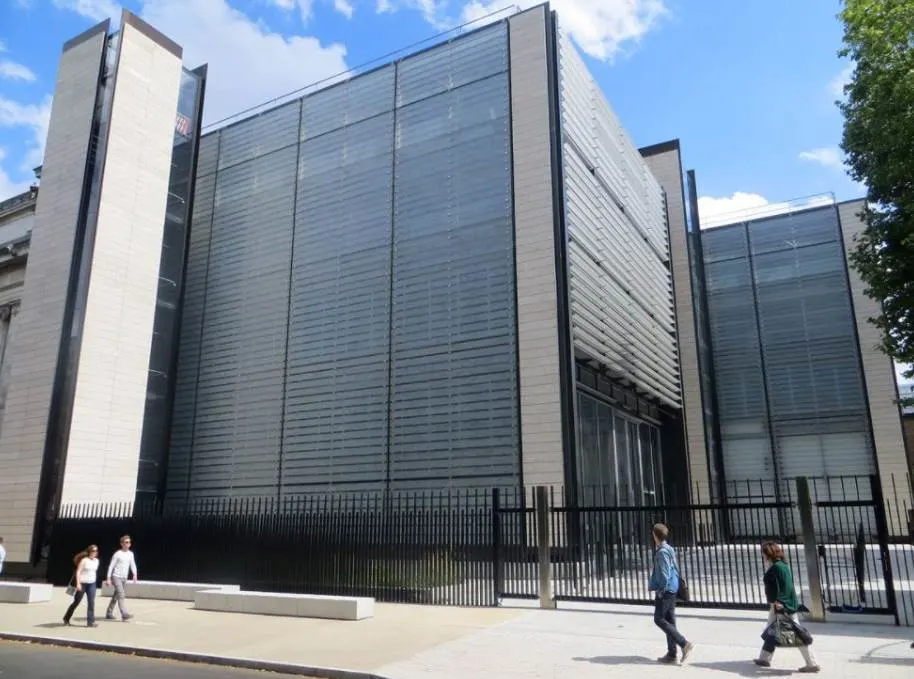
11. It features 94 galleries and an astounding amount of floor space
The complex is huge, but how big is it exactly? Let’s take a closer look at some interesting facts about the British Museum:
- Total area: 92,000 square meters (990,000 square feet).
- On-site storage space: 21,600 square meters (232,000 square feet).
- External storage space: 9,400 square meters (101,000 square feet).
- The number of galleries: 94.
- Length of exhibition space: 3.2 kilometers (2 miles).
- Collection size: 8 million objects.
It also attracts millions of visitors every year and is ranked in the top 5 most-visited museums in the world!
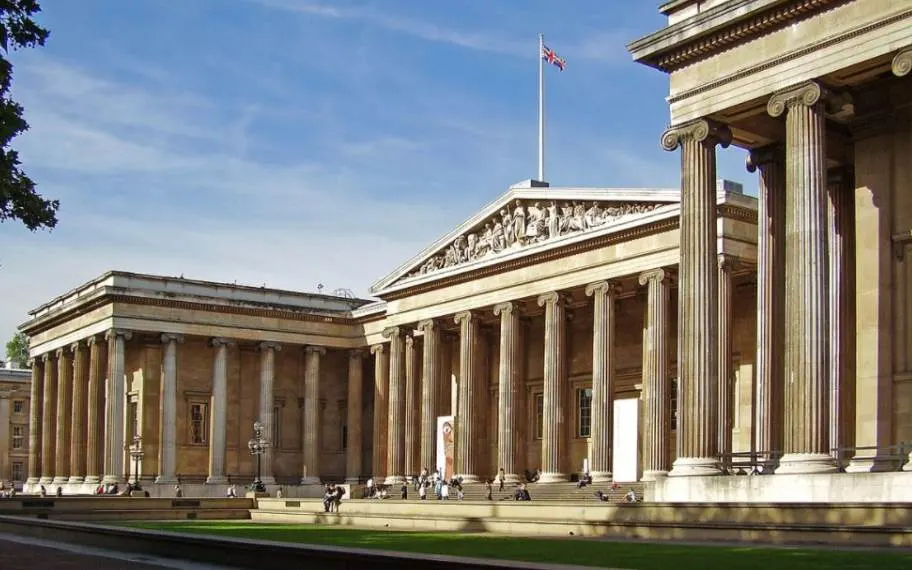
12. Less than 1% of the collection is on public display at the museum
Even though the museum has a collection size of over 8 million items, it’s not possible to see all of these. Less than 1% of all items in the collection are on public display at the museum, which is about 50,000 pieces.
The other items are stored safely in the museum’s on-site storage space, as well as two additional external storage facilities. These are Franks House in East London and Blythe House in West Kensington.
Blythe House was originally built as the headquarters of the Post Office Savings Bank but is now used to store items of 3 London Museum, the British Museum, the Science Museum, and the Victoria and Albert Museum!

